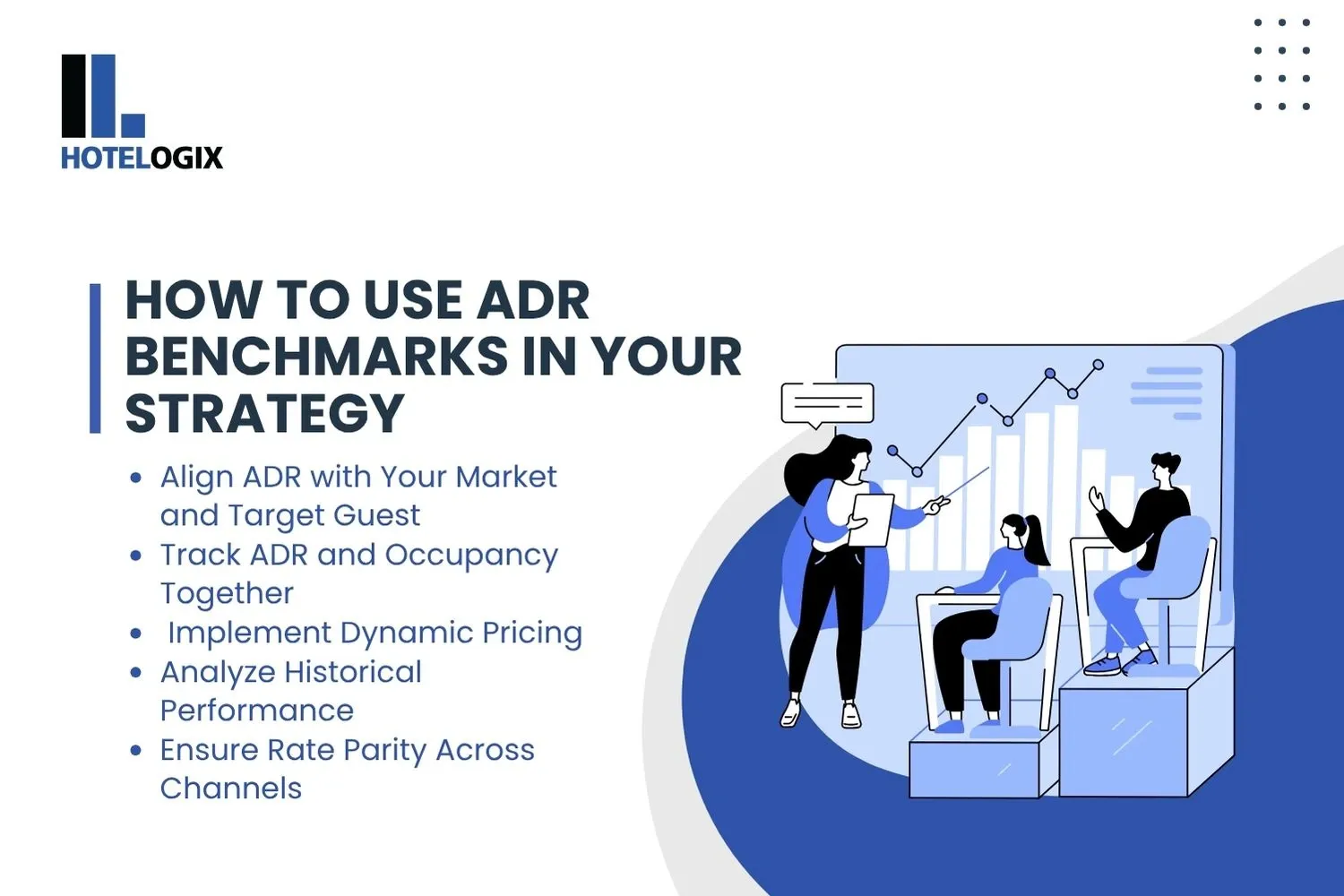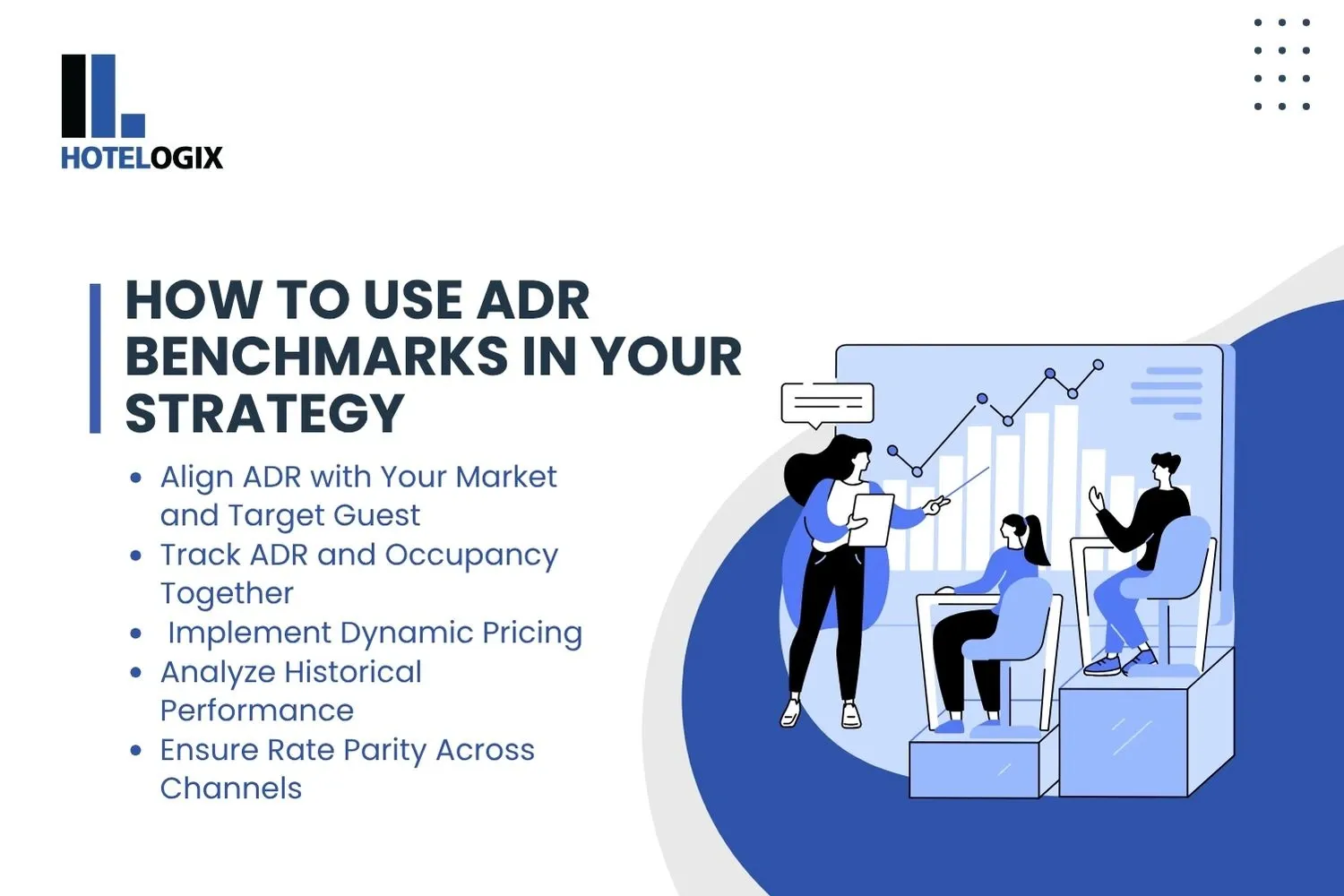What is a Good ADR in 2025? [Benchmarks by Region, Category, Segment]
For hoteliers, the first question that comes to mind is: “Is my hotel priced right?” Understanding what constitutes a good ADR in 2025 depends on multiple variables—region, hotel category, and traveler type.
ADR by Region (Q1 2025 Averages – Source: STR, Statista)
Latest Market Insight: The U.S. hotel industry reported an ADR of $161.98 for the week ending April 26, 2025, marking a 4.2% increase compared to the same period last year. This trend confirms the continued strength of the North American market within our forecasted range.
If you’re a hotel in India earning ₹3,500 in ADR while similar properties in your area command ₹6,000, there’s clear potential for improvement.
ADR by Hotel Category
ADR by Guest Segment
- Business travelers tend to yield higher ADR due to flexible budgets and midweek stays.
- Leisure travelers are more price-sensitive and influenced by seasonality and packages.
- Group and MICE bookings may bring down ADR but boost total revenue and occupancy.
Special Market Event Impact: Rome hotels experienced extraordinary ADR performance during Pope Francis’ funeral in May 2025, with rates reaching $365.08 and occupancy hitting 88.8% on the Friday before the ceremony. This demonstrates how significant cultural and religious events can temporarily transform market dynamics.
Understanding the ADR Formula
ADR, or Average Daily Rate, is one of the most crucial KPIs in hotel revenue management. It reflects the average amount a guest pays per occupied room per night.
💡
ADR Formula:
ADR = Total Room Revenue / Number of Rooms Sold
This formula excludes unsold inventory, giving a clear picture of your room pricing efficiency. For instance, if your hotel sells 80 rooms out of 100 at a total revenue of ₹400,000, your ADR would be ₹5,000.
Why ADR Benchmarks Matter for Hoteliers
ADR isn’t just a revenue metric—it’s a reflection of your hotel’s market position and rate strategy. Benchmarking your ADR against similar properties helps you:
- Identify if you’re underpricing or overpricing rooms
- Understand seasonal trends and demand shifts
- Improve your RevPAR (Revenue per Available Room) and overall yield
- Gain insights for rate planning and revenue forecasting
- Communicate pricing performance with investors and stakeholders
In 2025, where guests are more value-driven and booking behavior continues to evolve, ADR benchmarks are critical for sustainable growth.
How to Use ADR Benchmarks in Your Strategy

Hoteliers who use ADR benchmarks strategically do more than just compare—they act on insights.
1. Align ADR with Your Market and Target Guest
Business hotels in financial districts can command higher ADR during weekdays. Resorts in leisure destinations may benefit more from flexible seasonal pricing. Match your rate to the value perceived by your ideal guest.
2. Track ADR and Occupancy Together
High ADR but low occupancy may indicate your pricing is too aggressive. Conversely, a full house with very low ADR could suggest missed revenue. Always measure ADR alongside occupancy to assess true performance.
3. Implement Dynamic Pricing
Dynamic pricing is essential in 2025. Adjusting your rates based on demand, events, and booking windows can significantly improve ADR. Leverage past booking patterns and real-time data for better decisions.
4. Analyze Historical Performance
Compare current ADR against previous quarters or the same season last year. Are you improving, plateauing, or declining? Use those insights to adjust your strategy moving forward.
5. Ensure Rate Parity Across Channels
Track rates across OTAs and your direct booking engine to avoid undercutting. Offer value-based incentives (e.g., flexible cancellation, free breakfast) to drive direct bookings without lowering your price point.
Smart PMS for Real-Time ADR Monitoring Hotelogix offers a unified dashboard where hoteliers can track ADR, occupancy, and revenue by property, room type, and date range. With real-time insights, you can monitor performance trends and adjust strategies on the fly.
Dynamic Pricing Engine Hotelogix’s built-in dynamic pricing module automates rate updates based on live occupancy and demand levels. It ensures your rates stay competitive and optimized—without manual intervention.
Seamless Channel Manager Integration To maintain rate parity across OTAs and direct booking channels, Hotelogix integrates directly with leading channel managers, syncing rates and availability in real time.
Actionable Reports for Smarter Decisions Generate custom report outputs to analyze ADR trends, track the impact of pricing strategies, and forecast future performance—all from within the same platform.
Hotelogix simplifies yield management, helping independent hotels and groups grow revenue with confidence and control.
Final Thoughts: Let ADR Guide, Not Dictate
There’s no single ADR that works for every property. What matters is aligning your pricing with your hotel’s market position, guest expectations, and business goals.
A healthy ADR in 2025 is one that strikes the right balance between profitability and occupancy. It supports long-term revenue growth while positioning your hotel competitively within its category.
Rather than chasing a static target, use ADR benchmarks as a compass—one that helps you navigate changing demand, evolving traveler behavior, and increasing competition.
Frequently Asked Questions (FAQs) on ADR Hotel Benchmark
Q1. What is a good ADR for a hotel in 2025?
A: It depends on the region and hotel category. For midscale properties in India, ₹5,000–₹6,500 is a competitive range.
Q2. How can I compare my hotel’s ADR with competitors?
A: Use STR reports, OTA dashboards, and PMS tools like Hotelogix that track comp-set and market trends.
Q3. Why is ADR important in hotel revenue management?
A: It reflects your average income per sold room, helping identify revenue gaps and optimize pricing.
Q4. What affects ADR the most in the hotel industry?
A: Room type, location, seasonality, segmentation, promotions, and OTA strategies are key factors.
Q5. How can I improve ADR without lowering occupancy?
A: Focus on upselling, value-based packages, better room segmentation, and dynamic pricing that adjusts to real-time demand.
